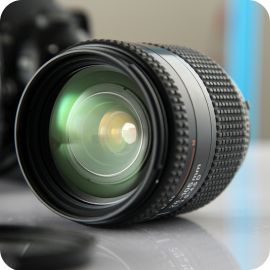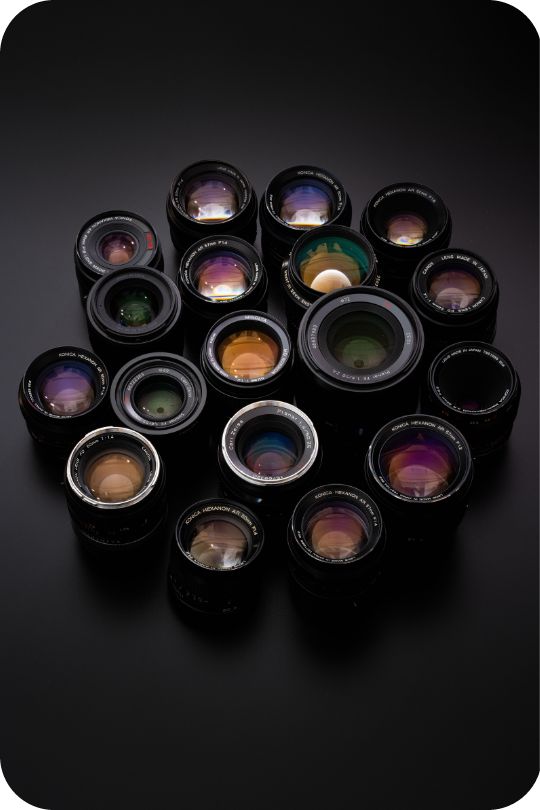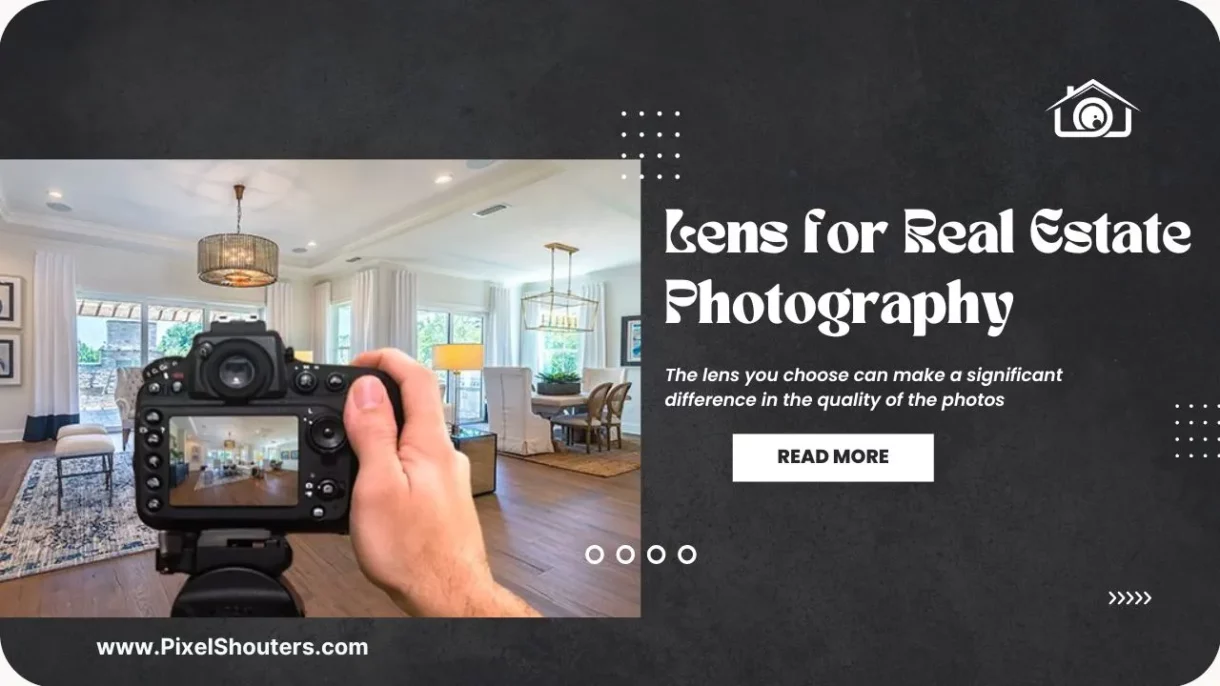Lens for Real Estate Photography: The Ultimate Guide
Real estate photography is a crucial aspect of marketing a property, whether it is for sale, rent, or vacation rental. Good real estate photos can attract potential buyers or renters, and help them visualize themselves living in the property. But taking high-quality real estate photos requires more than just a good camera. The lens you choose can make a significant difference in the quality of the photos. In this guide, we will discuss the different types of lens for real estate photography, the factors to consider when choosing a lens, and the best lenses for real estate photography.
Table of Contents
Types of Lenses for Real Estate Photography
When it comes to real estate photography, the most common types of lenses are wide-angle lenses, tilt-shift lenses, zoom lenses, and prime lenses. Each type has its own advantages and disadvantages, and the choice ultimately depends on the photographer’s needs and budget.
Wide-angle lenses: Wide-angle lenses are the most popular choice for real estate photography. They have a focal length of 10-20mm or 14-24mm, which allows them to capture more of the room in a single shot. This makes them ideal for small spaces or rooms with limited angles of view. Wide-angle lenses also help create a sense of spaciousness and depth in the photos. However, they can also create distortion, especially at the edges of the frame. This can be corrected in post-processing, but it is something to be aware of when using wide-angle lenses.
Tilt-shift lenses: Tilt-shift lenses, also known as perspective control lenses, are a specialized type of lens that can help correct perspective distortion and create straight lines in photos. They have a range of movements that allow the photographer to tilt and shift the lens relative to the camera body, which can be useful when photographing tall buildings or interior spaces with lots of vertical lines. However, tilt-shift lenses are also more expensive than wide-angle lenses, and they require a bit more skill and practice to use effectively.

Zoom lenses: Zoom lenses are versatile lenses that offer a range of focal lengths, allowing the photographer to zoom in or out as needed. They can be used for a variety of purposes, including portraits, landscapes, and real estate photography. Zoom lenses can range from budget-friendly options to high-end professional lenses. However, zoom lenses typically have a narrower maximum aperture than prime lenses, which can limit their low-light performance.
Prime lenses: Prime lenses have a fixed focal length, which means they cannot zoom in or out. However, they offer superior sharpness and image quality compared to zoom lenses, and they typically have wider maximum apertures, which allows for better low-light performance and more creative control over the depth of field. Prime lenses are often used by professional photographers who prioritize image quality over versatility.
Factors to Consider When Choosing a Lens for Real Estate Photography
Choosing the right lens for real estate photography can be a daunting task, especially if you are new to photography. a few things to think about while choosing a lens:

Focal length: The focal length of a lens can affect the field of view and distortion in the photos. A wide-angle lens with a focal length of 10-20mm or 14-24mm can capture more of the room in a single shot, but it can also create distortion at the edges of the frame. A longer focal length, such as 50mm or 85mm, can produce less distortion, but it also means you may need to take more shots to capture the entire room.
Aperture: The aperture of a lens can affect depth of field and low light performance. A wider maximum aperture, such as f/2.8 or f/1.8, can allow for better low-light performance and more creative control over the depth of field. Wider aperture lenses, on the other hand, are often more expensive.
Image stabilization: Image stabilization can be helpful when shooting in low light or when using longer focal lengths. It can help reduce camera shake and produce sharper images. However, not all lenses have image stabilization, and those that do can be more expensive.
Lens distortion: Some lenses, especially wide-angle lenses, can create distortion in the photos. This can be corrected in post-processing, but it is something to be aware of when choosing a lens. Look for lenses with low distortion and high image quality.
Budget: Lenses can cost anywhere from a few hundred to several thousand dollars. Consider your budget and the type of photography you will be doing before investing in a lens.
Best Lenses for Real Estate Photography
Now that you know the different types of lenses and factors to consider, let’s take a look at some of the best lenses for real estate photography:
- Canon EF 16-35mm f/2.8L III USM: This wide-angle zoom lens is popular among real estate photographers for its sharpness, low distortion, and fast maximum aperture of f/2.8. It is a bit on the pricey side, but it is worth the investment for professional photographers.
- Nikon AF-S Nikkor 14-24mm f/2.8G ED: This wide-angle zoom lens is known for its exceptional sharpness and low distortion, making it a popular choice for real estate photography. It has a fast maximum aperture of f/2.8 and is compatible with both full-frame and crop-sensor cameras.
- Canon TS-E 17mm f/4L Tilt-Shift Lens: This specialized tilt-shift lens is ideal for architectural photography and real estate photography. It allows for perspective correction and has a high level of sharpness and low distortion. It is a bit more expensive than other lenses, but it is worth it for the advanced capabilities.
- Sony FE 12-24mm f/4 G Lens: This wide-angle zoom lens is compatible with Sony full-frame cameras and has a focal length range of 12-24mm. It has a fast and silent autofocus system and produces sharp and detailed images. It is a more budget-friendly option compared to some of the other lenses on this list.
- Sigma 14mm f/1.8 DG HSM Art Lens: This prime lens has a wide maximum aperture of f/1.8, allowing for great low light performance and depth of field control. It is compatible with full-frame cameras and produces sharp and high-quality images. It is also a more affordable option compared to some of the other prime lenses on the market.

Conclusion
Choosing the right lens for real estate photography can make a significant difference in the quality of your photos. Wide-angle lenses are the most popular choice for real estate photography, but tilt-shift lenses, zoom lenses, and prime lenses also have their advantages. When choosing a lens for real estate photography, consider the focal length, aperture, image stabilization, distortion, and budget.
The Canon EF 16-35mm f/2.8L III USM, Nikon AF-S Nikkor 14-24mm f/2.8G ED, Canon TS-E 17mm f/4L Tilt-Shift Lens, Sony FE 12-24mm f/4 G Lens, and Sigma 14mm f/1.8 DG HSM Art Lens are all excellent options for real estate photography. With the right lens and some practice, you can capture stunning real estate photos that will attract potential buyers or renters.
